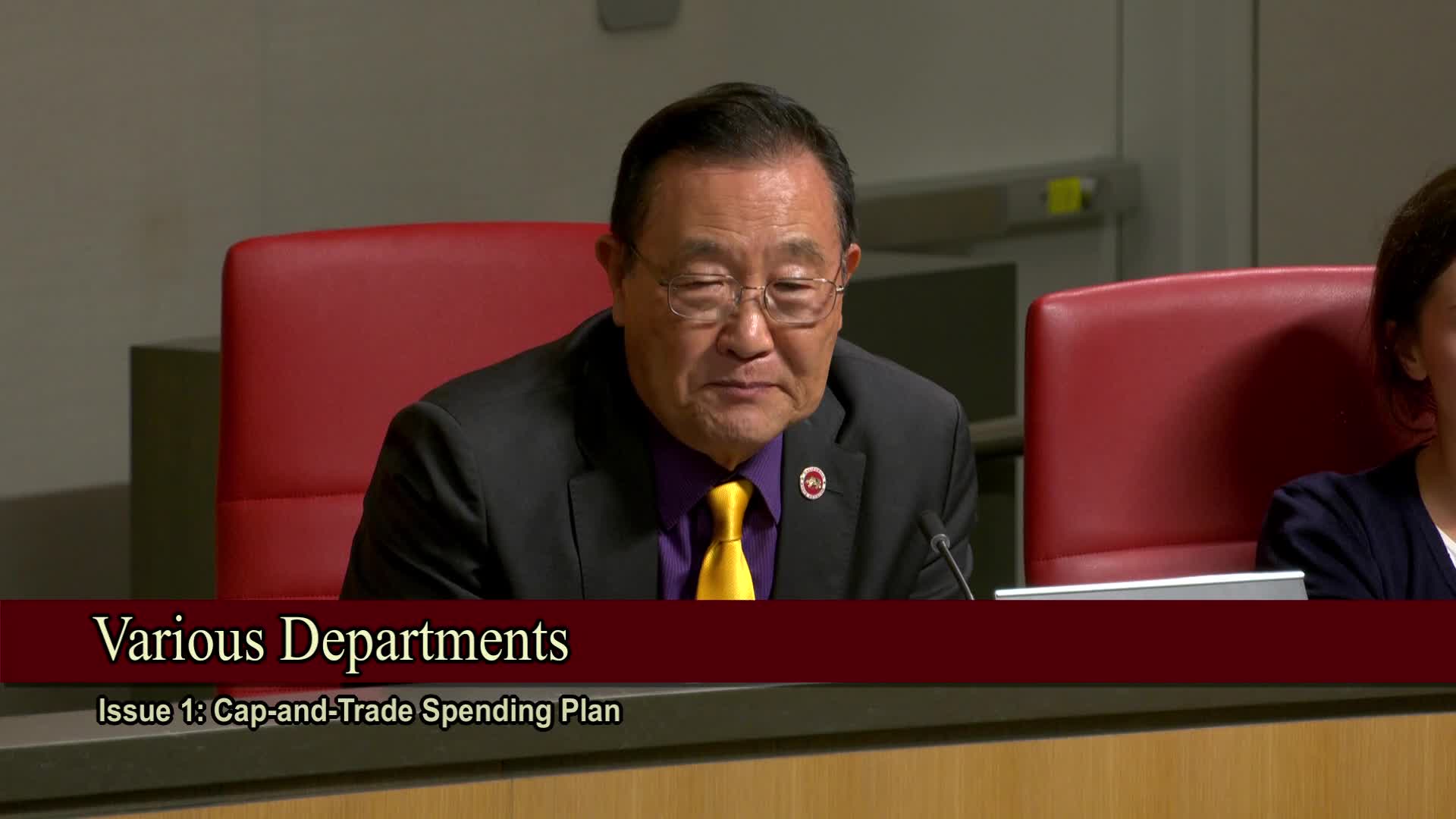California high speed rail funding faces scrutiny as costs rise to $130 billion
May 01, 2025 | California State Senate, Senate, Legislative, California
This article was created by AI summarizing key points discussed. AI makes mistakes, so for full details and context, please refer to the video of the full meeting. Please report any errors so we can fix them. Report an error »

The California Senate Budget and Fiscal Review Subcommittee No. 2 recently convened to discuss the ongoing challenges and financial implications of the high-speed rail project, a topic that continues to stir debate among lawmakers and residents alike. With costs ballooning from an initial estimate of $33 billion to projections exceeding $130 billion, concerns about the project's viability and efficiency are mounting.
During the meeting, officials highlighted that the high-speed rail authority currently relies on a mix of funding sources, including approximately $1 billion annually from cap-and-trade revenues and $4.2 billion from Proposition 1A bonds. However, the federal government has indicated it will not continue funding, which could complicate the project's financial landscape further. This uncertainty raises questions about how effectively taxpayer dollars are being utilized, especially as the project has yet to lay any tracks after 17 years of planning and development.
Subcommittee members expressed frustration over the slow progress and the lack of tangible results. The authority's latest operational timeline suggests that initial services between Merced and Bakersfield could begin between 2030 and 2033, although some experts believe this timeline may be overly optimistic. The ongoing civil works are essential for laying the groundwork, but many lawmakers are questioning the rationale behind continued funding without visible progress.
Additionally, discussions touched on the potential for private investment in the project. While there have been expressions of interest from several entities, concerns remain about whether these investments would genuinely mitigate risks or simply lead to higher borrowing costs for the state.
As the high-speed rail project continues to face scrutiny, the subcommittee's discussions underscore the need for transparency and accountability in how funds are allocated and spent. With significant taxpayer money at stake, residents are eager for updates on the project's status and a clearer path forward that aligns with community needs and expectations. The next steps will be crucial in determining whether this ambitious transportation initiative can overcome its hurdles and deliver on its promises.
During the meeting, officials highlighted that the high-speed rail authority currently relies on a mix of funding sources, including approximately $1 billion annually from cap-and-trade revenues and $4.2 billion from Proposition 1A bonds. However, the federal government has indicated it will not continue funding, which could complicate the project's financial landscape further. This uncertainty raises questions about how effectively taxpayer dollars are being utilized, especially as the project has yet to lay any tracks after 17 years of planning and development.
Subcommittee members expressed frustration over the slow progress and the lack of tangible results. The authority's latest operational timeline suggests that initial services between Merced and Bakersfield could begin between 2030 and 2033, although some experts believe this timeline may be overly optimistic. The ongoing civil works are essential for laying the groundwork, but many lawmakers are questioning the rationale behind continued funding without visible progress.
Additionally, discussions touched on the potential for private investment in the project. While there have been expressions of interest from several entities, concerns remain about whether these investments would genuinely mitigate risks or simply lead to higher borrowing costs for the state.
As the high-speed rail project continues to face scrutiny, the subcommittee's discussions underscore the need for transparency and accountability in how funds are allocated and spent. With significant taxpayer money at stake, residents are eager for updates on the project's status and a clearer path forward that aligns with community needs and expectations. The next steps will be crucial in determining whether this ambitious transportation initiative can overcome its hurdles and deliver on its promises.
View full meeting
This article is based on a recent meeting—watch the full video and explore the complete transcript for deeper insights into the discussion.
View full meeting
